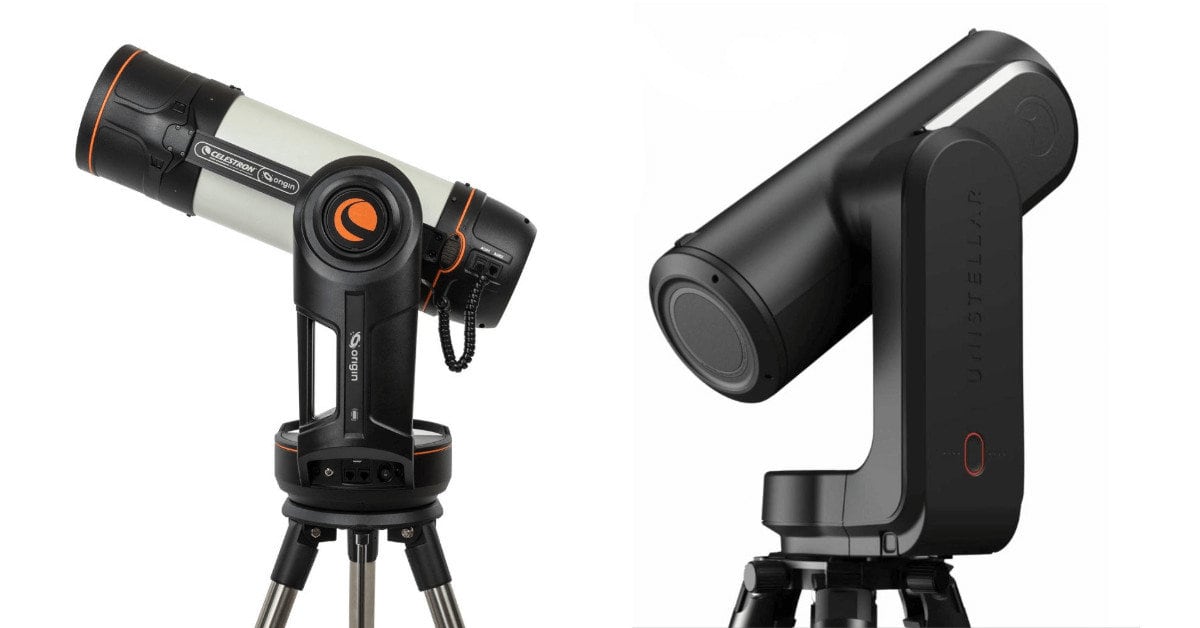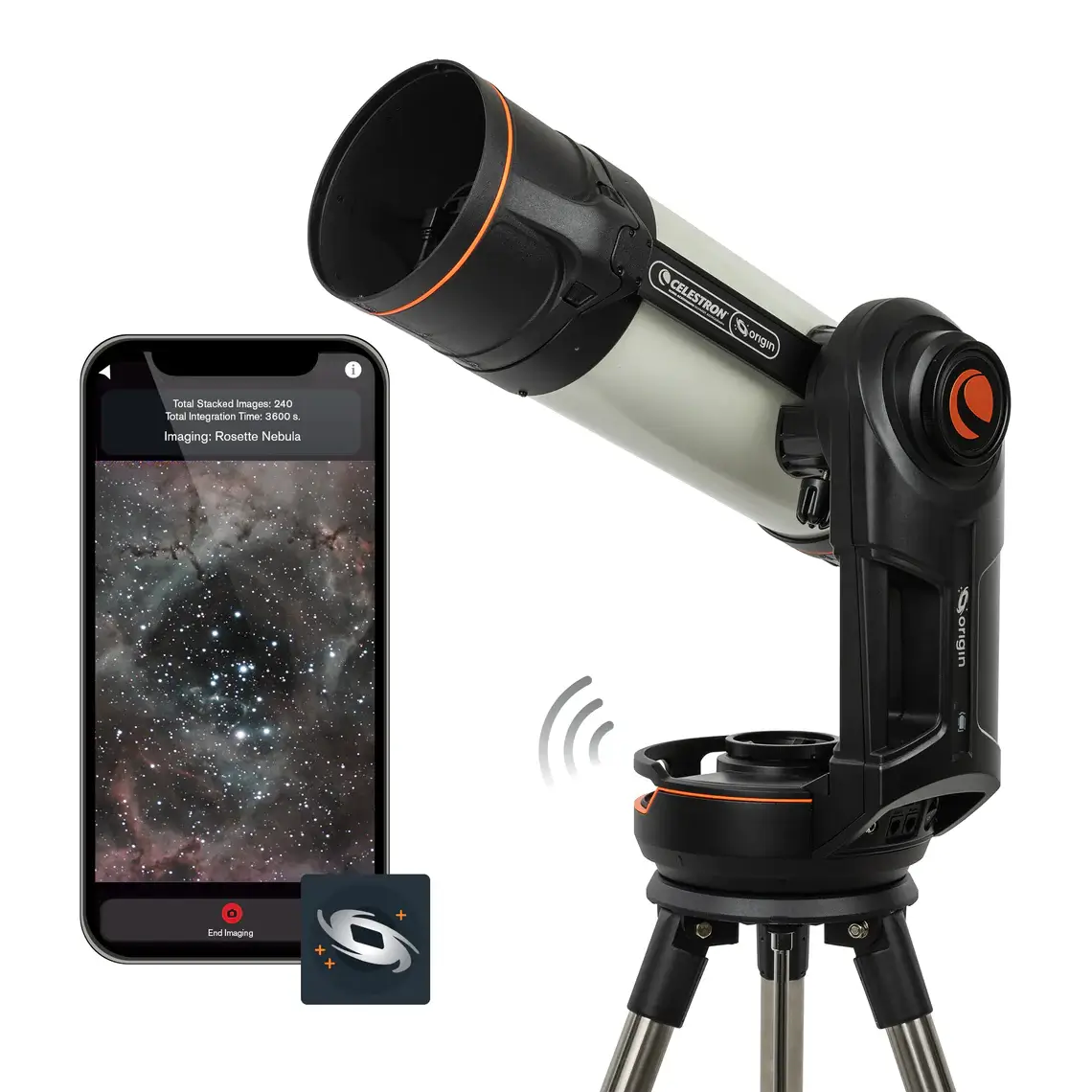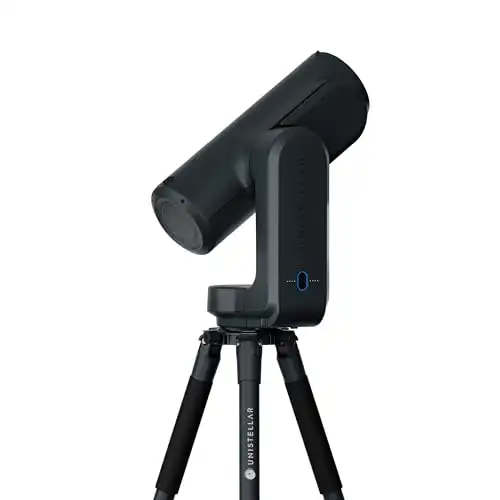Celestron Origin vs Unistellar Odyssey: 10 Second Summary
- The Celestron Origin is a superior astrophotography telescope to the Unistellar Odyssey, but is heavier, more expensive, and requires more work to operate.
- The Unistellar Odyssey has lower telescope and camera specs, but it is cheaper, easier to use, much smaller and lighter, and with it you can join Citizen Astronomy initiatives.
Why choose the Celestron Origin over the Unistellar Odyssey?
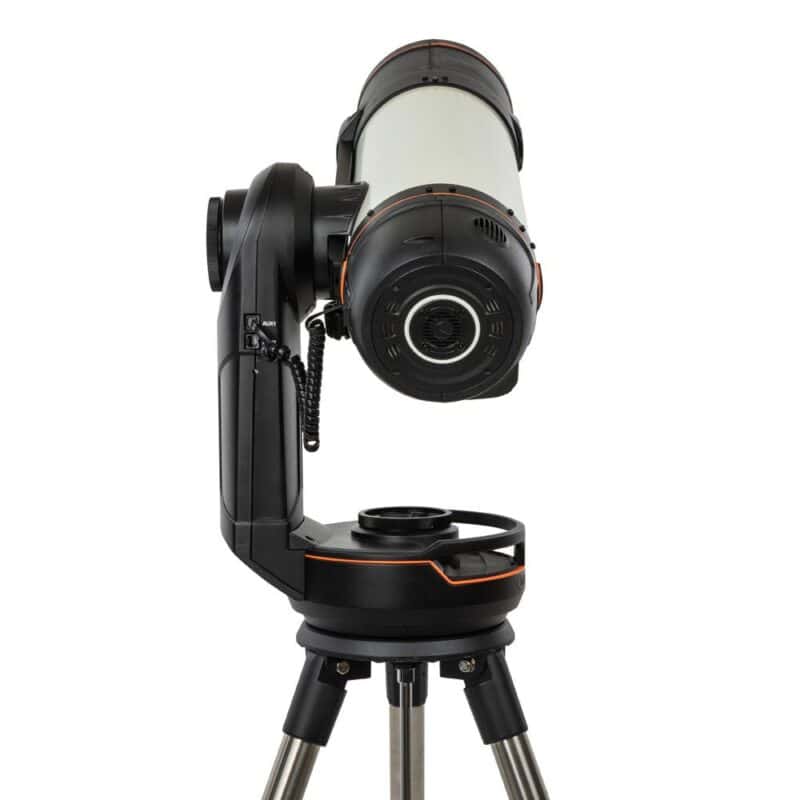
The Celestron Origin is a premium smart telescope from American astronomy manufacturer Celestron that was released in 2024.
It is Celestron’s first smart telescope and offers the highest specification Optical Tube Assembly (OTA – the telecope) of any smart telescope on the market.
The advantages over the Unistellar Odyssey are:
- The Celestron Origin telescope type is a specialist astrophotography type called a Rowe-Ackermann Schmidt Astrograph (RASA) that is well-loved and proven by experienced astrophotographers.
- The telescope has 6-inch aperture and an f/2.2 focal ratio – this is above that of the Unistellar Odyssey and so the images produced will be superior.
- Unlike the Unistellar Odyssey (or any other smart telescope), the mount and camera can be replaced and upgraded in the future.
- The Celestron Origin is the best smart telescope for actual astrophotography and is effectively an off-the-shelf astrophotography setup with telescope, mount, camera and necessary accessories in an easy to use package.
In terms of downsides versus the Unistellar Odyssey:
- It is more than four times the weight of the Unistellar Odyssey and much bigger. Therefore cannot compete with the portability or easy storage.
- The Celestron Origin telescope may require occasional collimation (a form of manual adjustment), but the Unistellar Odyssey does not and so can always be pulled out to use without having to think about any tinkering.
- It is more expensive.
Why choose the Unistellar Odyssey over the Celestron Origin?
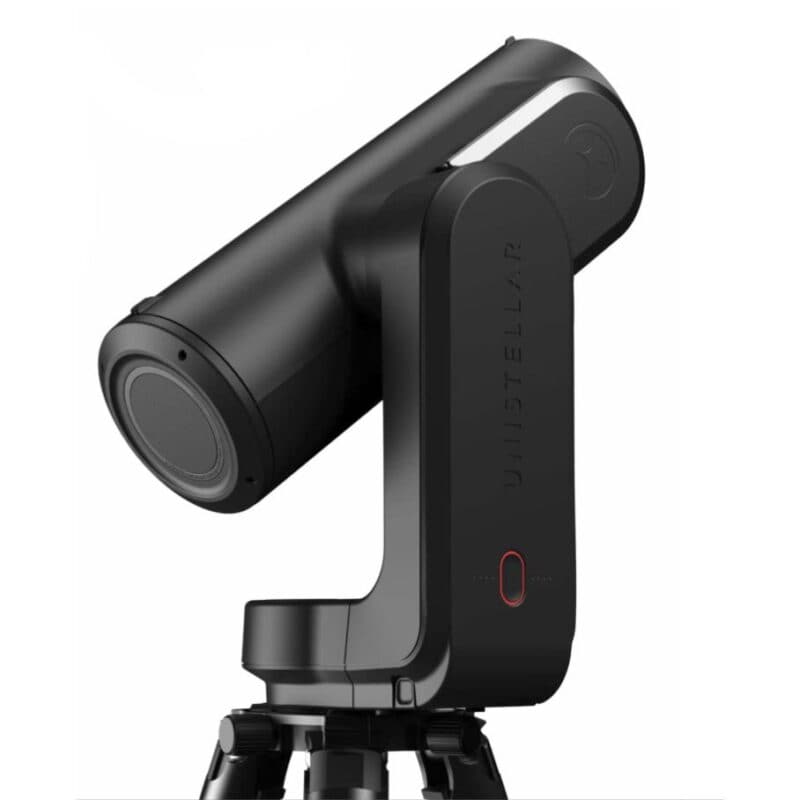
The Unistellar Odyssey is a premium smart telescope from French manufacturer Unistellar that is brand new in 2024.
The main reasons to consider it over the Celestron Origin are:
- The Unistellar Odyssey is significantly smaller and lighter. This means that you can take it on trips and also that it packs up much more easily for home storage.
- The Unistellar Odyssey will not require collimation and so is easier to just grab and go with. Whilst collimation is not difficult (there are simple tutorials you can follow) it will put off people that would rather have something that they know they can pull out whenever they want and not think about making adjustments.
- With all Unistellar models you can take part in Citizen Astronomy initiatives and join missions to track asteroids and hunt exoplanets.
- It is cheaper
The main downside versus the Celestron Origin is that it will not be as good an astrophotography telescope.
Telescope Specifications
The Celestron Origin has:
- 152mm (6 inch) aperture
- 335mm focal length
- f/2.2 focal ratio
- 1.27° x 0.85° field of view
The Unistellar Odyssey has:
- 85mm (3.3 inch) aperture
- 320mm focal length
- f/3.8 focal ratio
- 0.56° x 0.75° field of view
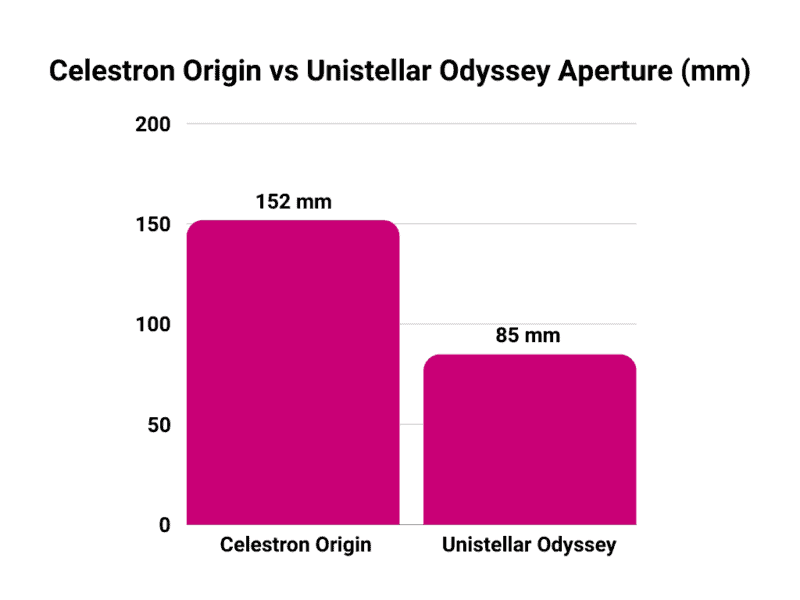
Camera Specifications
The Celestron Origin has a 6.4MP resolution camera of 3096 x 2080 size using a Sony IMX178 sensor and a pixel size of 2.4μm.
The Unistellar Odyssey has a 3.4MP resolution camera using a Sony IMX615 sensor and a pixel size of 1.45μm.
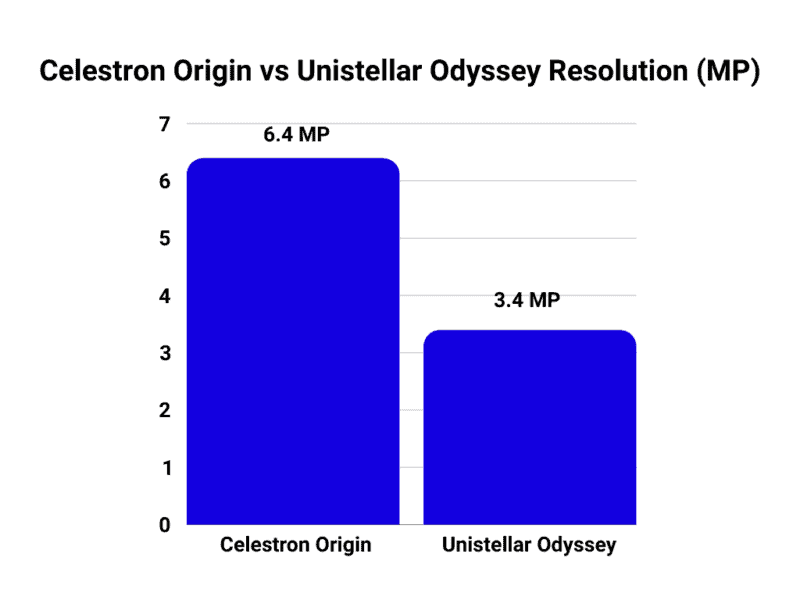
Size and Weight
The Celestron Origin weighs 18.9kg (41.6 lb) and has dimensions of 122 x 66 x 61 ((H x W x L in cm).
The Unistellar Odyssey weighs 4kg (8.8 lb) and has dimensions of 13 x 20 x 43 ((H x W x L in cm).
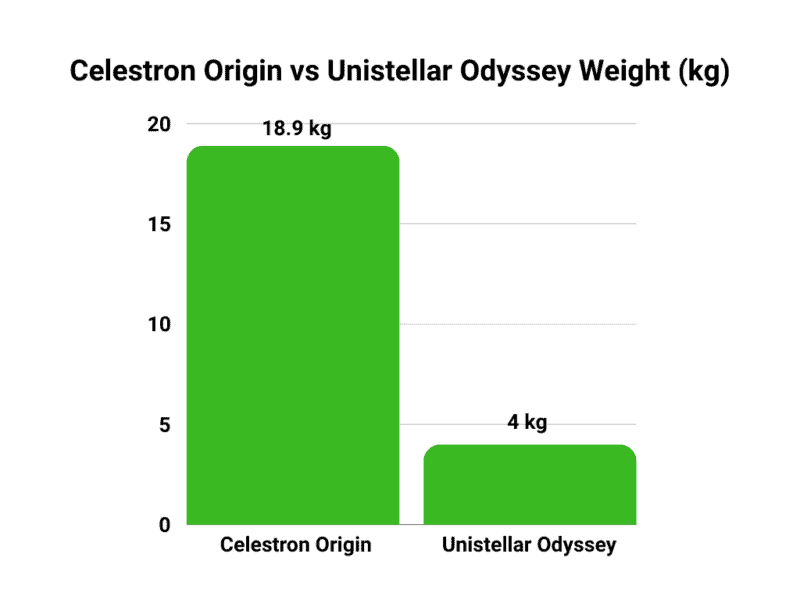
Price and Value for Money
The Celestron Origin costs $3,999, and the Unistellar Odyssey costs $2,499.
Note, these may vary so check the links to compare retailers if thinking about buying.
Specifications
| Celestron Origin | Unistellar Odyssey | |
|---|---|---|
| Year | 2024 | 2024 |
| Aperture | 152mm (6 inch) | 85mm (3.3 inch) |
| Focal Length | 335mm | 320mm |
| Focal Ratio | f/2.2 | f/3.8 |
| Limiting Magnitude | 13.61 | 12.35 |
| OTA type | Rowe-Ackermann Schmidt Astrograph | Reflector |
| Eyepiece | No | No |
| Field of View | 1.27° x 0.85° | 0.56° x 0.75° |
| Resolution | 6.4MP | 3.4MP |
| Sensor Size | 3096 x 2080 | |
| Sensor | Sony IMX178 | Sony IMX615 |
| Pixel Size | 2.4μm | 1.45μm |
| Image Formats | Raw | FITS, TIFF, PNG, JPEG |
| Mosaic Mode | No | No |
| Size (H x W x L) cm | 122 x 66 x 61 | 13 x 20 x 43 |
| Weight | 18.9kg (41.6 lb) | 4kg (8.8 lb) |
| Mount | Included | Included |
| Tripod | Included | Included |
| Battery Life | 6 hrs | 5 hrs |
| Internal Storage | unknown | 64GB |
| Dew Control | Built-in | None |
| Retail Price* | $3,999 | $2,499 |
Unistellar Odyssey vs Celestron Origin Verdict
Overall, the Celestron Origin will be right for you if you are looking for the best option in terms of actual astrophotography and are ok with the additional weight, reduced portability, and higher price.
The Unistellar Odyssey will suit a person looking for something that is easier-to-use and a more convenient package in terms of portability and storage.
|
$3,999.00
|
$2,499.00
|


